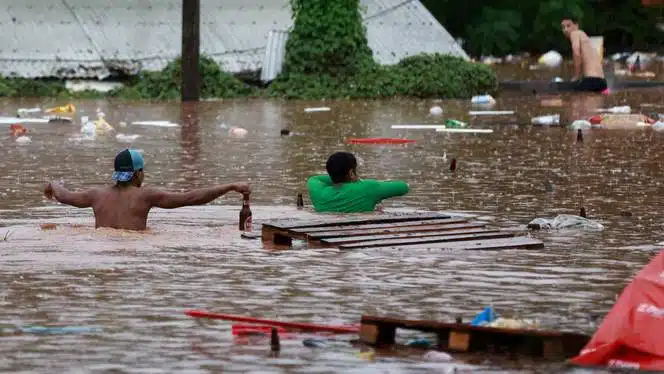According to officials, the storms that inflicted the most damage in the state of Rio Grande do Sul also left 10,242 people displaced in 154 communities and 60 individuals missing.
Rio Grande do Sul, the southernmost state of Brazil, has had severe rains that have left 29 people dead, according to local officials. The state government has proclaimed a state of public calamity in response to the dire circumstances.
According to Rio Grande do Sul’s civil defense, the storms, which have wreaked the most havoc on the state in recent memory, have also left 10,242 people displaced in 154 communities and 60 individuals missing.
In a live broadcast on social media on Thursday, state governor Eduardo Leite stated, “It’s not just another critical case; it’s the most critical that the state will probably have recorded in its history,” and added that the situation was worse than the state’s rainy season last year.
The main utilities firm in the state said that a dam at a small hydroelectric power plant burst on Thursday, leaving over 300,000 people without electricity.
On Thursday, Governor Leite and President Luiz Inacio Lula da Silva had an emergency meeting in Santa Maria after the latter flew over the impacted areas.
“I told the governor and my ministers that the federal government will make every effort. … We will take care of this with great care and respect,” Lula stated at the time.
Leite announced a state of public catastrophe, citing the risk the state faces due to climatic events, and asked for coordination in the rescue efforts, asking for “full force” in a video that was shared on social media.
In a late-night chat with Leite on Wednesday, Lula promised to send as many men as needed to assist in handling the situation, according to the president’s office.
severe weather
There have been a lot of natural disasters recently in Brazil. Previous storms had already caused the region’s rivers to swell. A cyclone struck the state in September of last year, resulting in at least 31 deaths.
In the state of São Paulo, heavy rainfall last year resulted in landslides and flooding that claimed the lives of over 50 people.
The largest nation in South America has had a number of recent catastrophic weather occurrences, which scientists believe are more frequent due to the climate problem.
Following a period of intense heat, a cold front pounded the south and southeast, causing the floods.
SOURCE: TRTWORLD






